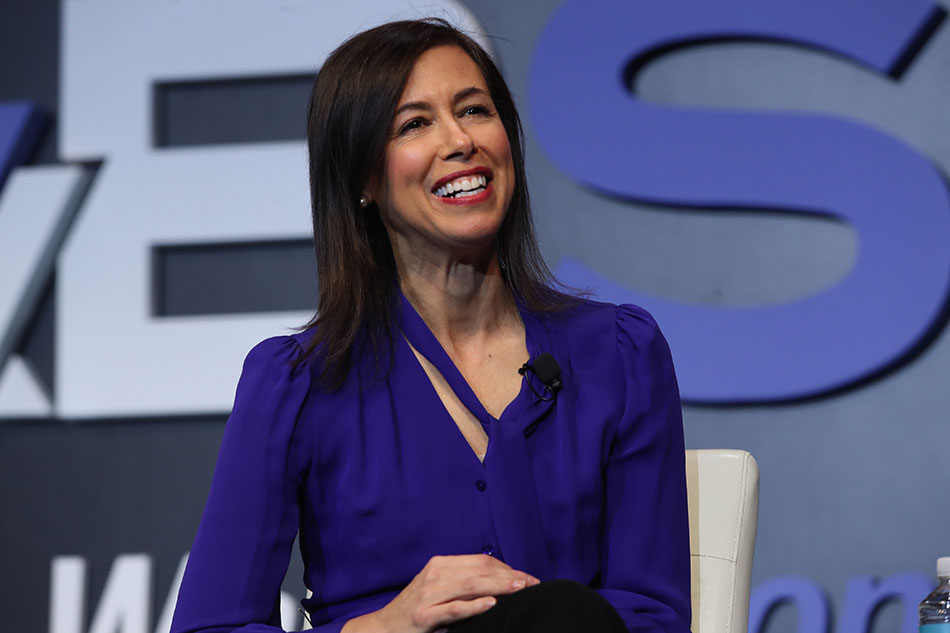FCC Chair Jessica Rosenworcel Proposes Redefining High-Speed Broadband
Says regulator’s current baseline is harmful

Taking a couple of pages from the Biden administration’s parameters for some $65 billion in broadband deployment subsidies, Federal Communications Commission chair Jessica Rosenworcel has proposed upping the agency’s minimum definition of high-speed broadband availability and making "affordability, adoption, availability, and equitable access" part of that definition.
Rosenworcel put that high-speed stake in the ground Friday, circulating a notice of inquiry launching its annual state of broadband review.
Also: FCC Seeks Input on Coordination of Broadband Subsidy Bucks
Rosenworcel is proposing to increase the minimum definition of high-speed broadband availability from 25 Megabits per second for downloads and 3 Mbps for uploads to 100 Mbps/20 Mbps and setting its sights on speeds of 10 times that number.
“The needs of internet users long ago surpassed the FCC’s 25/3 speed metric, especially during a global health pandemic that moved so much of life online,” Rosenworcel said. “The 25/3 metric isn’t just behind the times, it’s a harmful one because it masks the extent to which low-income neighborhoods and rural communities are being left behind and left offline.”
The NOI proposes to increase the national broadband standard the FCC uses to determine broadband availability to 100/20, which is the baseline for new buildouts being funded by the Biden Administration's infrastructure subsidies.
Rosenworcel pointed out that the FCC set the previous baseline way back in 2015, which to put into perspective predates the creation of TikTok and Snapchat's IPO.
Multichannel Newsletter
The smarter way to stay on top of the multichannel video marketplace. Sign up below.
The NOI also proposes setting a goal of 1 Gbps/500 Mbps “for the future.”
It is no surprise that Rosenworcel, now that she is chair, is moving to up the baseline.
Back in 2018, when she was a minority commissioner under Republican chair Ajit Pai, she said 25 Mbps was “insufficiently audacious.” That, too, came as the FCC was launching its annual broadband deployment report. “It is time to be bold and move the national broadband standard from 25 Megabits to 100 Megabits per second,” she said at the time. It didn't happen.
The lower the speed that qualifies as broadband availability, the higher the percentage of Americans considered served by broadband.
Now, rather than audacious, Rosenworcel is suggesting that 100 Mbps is table stakes, and 1 Gigabit per second is the prize the FCC’s eyes should be on.
NTCA–The Rural Broadband Association CEO Shirley Bloomfield applauded the proposed speed change.
“NTCA has long advocated that, as a nation, we need to aim higher and do better when it comes to setting broadband objectives," she said. "From proposing higher speed targets for universal service policy, to advocating for better broadband in the development of infrastructure funding grant programs, NTCA has consistently urged longer-term perspectives rather than short-term incremental views of what represent efficient investments and the ever-evolving level of services that consumers will need over time. We applaud Chairwoman Rosenworcel’s announcement today that she is proposing to increase the national standard for minimum broadband speeds and to set a long-term objective as well.”
Bloomfield did not specifically address the proposal to add "affordability, adoption, availability, and equitable access" to the definition of available broadband.
“We are pleased to see Chairwoman Jessica Rosenworcel taking this important first step toward increasing internet speed benchmarks, and we encourage the entire FCC to think bigger and bolder by setting gigabit goals today that unleash a faster, better future for all American families and businesses," said Chip Pickering, CEO of INCOMPAS, which represents competitive carriers and some edge providers.▪️
Contributing editor John Eggerton has been an editor and/or writer on media regulation, legislation and policy for over four decades, including covering the FCC, FTC, Congress, the major media trade associations, and the federal courts. In addition to Multichannel News and Broadcasting + Cable, his work has appeared in Radio World, TV Technology, TV Fax, This Week in Consumer Electronics, Variety and the Encyclopedia Britannica.

